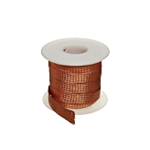A Guide to Buying Wires and Cables
- Post author:ayda ahangi
- Post published:March 11, 2024
- Post category:Conductors
- Post comments:0 Comments
Purchasing wires and cables (conductors) may seem straightforward, but making the right choice is crucial to ensure they meet your needs and perform effectively.
Below is a guide to buying wires and cables, along with essential tips:
Cable Types:
- Various types of cables exist, such as HDMI for connecting TVs to different devices, USB for connecting devices to computers or charging, and Ethernet for network connections.
Cable Length:
- Evaluate your needs and ensure you choose the appropriate cable length. Extra length allows for more flexibility in placing devices farther apart.
Build Quality:
- Opt for high-quality and durable cables to ensure a longer lifespan and reliable performance.
Insulation and Sheathing:
- If the cable will be used in specific environments like outdoor spaces or areas with water and dust, make sure it has suitable insulation and sheathing.
Supported Power:
- For cables used in data transfer or connecting specific devices (e.g., HDMI for connecting a TV to a Blu-ray player), ensure the cable supports the required power.
Price and Brand:
- While price is a factor, prioritize quality and consider reputable brands for reliability.
Cable Testing:
- After purchase, always test the cable to ensure it functions correctly.
By following these tips, you can choose suitable wires and cables for your needs, whether for personal or professional use in construction projects.
products

Here are common types of cable conductors:
1. Copper Conductors:
– Copper is the most widely used material for conducting electricity in cables due to its high conductivity and relatively low cost. It is used in various cables, including power cables, Ethernet cables, and audio cables.
2. Aluminum Conductors:
– Aluminum is another metal used in cable conductors, often chosen for its lighter weight and cost-effectiveness. However, it has lower conductivity compared to copper and is more susceptible to corrosion.
3. Silver Conductors:
– Silver offers excellent electrical conductivity, making it suitable for high-end audio and video cables. While it provides superior performance, silver is more expensive, limiting its widespread use.
4. Gold-Plated Conductors:
– Gold is highly corrosion-resistant and provides stable conductivity. Gold-plated conductors are commonly found in audio and video cables, ensuring reliable signal transmission over time.
5. Tinned Copper Conductors:
– Tinning involves coating copper conductors with a thin layer of tin, enhancing their resistance to corrosion. Tinned copper conductors are often used in marine and outdoor applications.
6. Bare Copper Conductors:
– In some applications, copper conductors may be left bare, especially in power cables. However, bare copper is more prone to oxidation and corrosion, so it is often coated or insulated.
7. High-Performance Alloy Conductors:
– Some cables use conductors made from specialized alloys to achieve specific performance characteristics. These alloys may include materials like bronze or nickel.
It’s essential to consider the conductor material when choosing cables, as it directly affects the cable’s electrical properties, durability, and overall reliability. The specific requirements of your application will help determine the most suitable conductor type for your needs.



